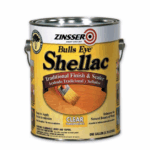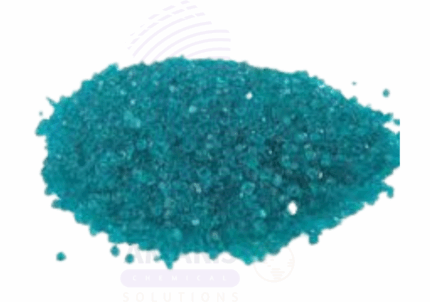Orbit LCD
Whatsapp Order
Orbit LCD is a concentrated liquid chemical dispersant designed to improve the dispersion of pigments, fillers, and other particulate materials in coatings, paints, inks, and adhesives. It enhances color uniformity, stability, and rheological properties of formulations by reducing particle agglomeration and sedimentation. With excellent compatibility in waterborne and solvent-based systems, Orbit LCD 48% is widely used in industrial and decorative coatings for optimal performance.
Description
Table of Contents
Toggle
Orbit LCD
Primary Uses
- Coatings and Paints
- Enhances pigment dispersion in both waterborne and solvent-based paints.
- Improves color uniformity and gloss retention.
- Reduces settling and flocculation of pigments during storage and application.
- Printing Inks
- Assists in dispersing pigments and additives for consistent color and print quality.
- Improves flow and reduces viscosity fluctuations in ink formulations.
- Adhesives and Sealants
- Facilitates uniform dispersion of fillers and pigments in adhesive formulations.
- Enhances stability and performance of sealants.
- Plastics and Composites
- Used to disperse pigments and fillers in polymer matrices for improved appearance and mechanical properties.
Secondary Uses
- Textile Printing
- Improves dispersion of dyes and pigments in textile printing pastes.
- Ceramic and Construction Materials
- Enhances distribution of pigments and additives in ceramic glazes and construction coatings.
KEY PRODUCT FEATURES
1. Basic Identification Attributes
- Chemical Name (IUPAC): Proprietary dispersant formulation (typically acrylic or polycarboxylate based)
- Common/Trade Name: Orbit LCD 48%
- CAS Number: Proprietary mixture
- HS Code: 3206.49.90 (Other pigment preparations)
- Synonyms: Liquid chemical dispersant, pigment dispersant concentrate
2. Physical & Chemical Properties
- Physical State: Liquid concentrate
- Color & Odor: Light yellow to amber; mild chemical odor
- pH: Typically 7 – 9 (aqueous solution)
- Solubility: Miscible with water and compatible with many solvents
- Density: Approximately 1.1 – 1.2 g/cm³
3. Safety & Hazard Attributes
- GHS Classification: Not classified as hazardous under normal handling
- Toxicity: Low toxicity; avoid ingestion and prolonged skin contact
- Exposure Limits: No specific limits; follow standard chemical handling procedures
4. Storage & Handling Attributes
- Storage Conditions: Store in sealed containers at ambient temperature, away from direct sunlight and freezing
- Container Type: Supplied in plastic drums or jerrycans
- Shelf Life: Typically 12 months if stored properly
- Handling Precautions: Use gloves and eye protection; avoid inhalation of vapors
5. Regulatory & Compliance Attributes
- Complies with relevant chemical safety standards (REACH, EPA)
- Suitable for use in industrial coatings and related applications
6. Environmental & Health Impact
- Biodegradability: Readily biodegradable
- Ecotoxicity: Low environmental impact when used as directed
- Bioaccumulation: Not expected to bioaccumulate
- Carcinogenicity/Mutagenicity: Not classified as hazardous
SAFETY HANDLING PRECAUTIONS
Safety Handling Precautions
- PPE Required: Gloves and safety goggles recommended
- Handling Guidelines: Use in well-ventilated areas; avoid skin and eye contact
- Storage Measures: Keep containers tightly closed and away from incompatible materials
First Aid Measures
- Inhalation: Move to fresh air if irritation occurs; seek medical attention if symptoms persist
- Skin Contact: Wash thoroughly with soap and water; seek medical advice if irritation develops
- Eye Contact: Rinse with water for at least 15 minutes; seek medical attention if irritation continues
- Ingestion: Rinse mouth; do not induce vomiting; seek medical help immediately
Firefighting Measures
- Fire Hazards: Non-flammable liquid concentrate
- Extinguishing Media: Use water spray, foam, dry chemical, or CO₂ extinguishers if required for surrounding fire
- Special Precautions: Use standard protective firefighting equipment
- Hazardous Combustion Products: May produce carbon oxides under fire conditions
Related products
Ammonium Cupric Chloride
Ammonium Cupric Chloride is a blue-green crystalline inorganic compound composed of copper, ammonium, and chloride ions. It is widely used as a source of copper in agricultural fungicides and bactericides, as well as in electroplating, chemical synthesis, and textile dyeing. Its antimicrobial properties make it valuable for controlling fungal and bacterial infections in plants. Additionally, it serves as a precursor in various industrial and laboratory applications.
Nickel Sulphate
Nickel Sulphate is an inorganic compound consisting of nickel and sulfate ions, typically found as a green crystalline solid. It is highly soluble in water and widely used as a key raw material in electroplating, chemical synthesis, and battery manufacturing. Nickel Sulphate plays a crucial role in producing nickel metal coatings, catalysts, pigments, and in the preparation of other nickel compounds. Due to its versatile chemical properties, it is essential in various industrial processes.


 Preservatives(food)
Preservatives(food) Flavor Enhancers
Flavor Enhancers Acidulants
Acidulants Sweeteners
Sweeteners Antioxidants
Antioxidants Colorants(food)
Colorants(food) Nutraceutical Ingredients (food)
Nutraceutical Ingredients (food) Nutrient Supplements
Nutrient Supplements Emulsifiers
Emulsifiers
 Collectors
Collectors Dust Suppressants
Dust Suppressants Explosives and Blasting Agents
Explosives and Blasting Agents Flocculants and Coagulants
Flocculants and Coagulants Frothers
Frothers Leaching Agents
Leaching Agents pH Modifiers
pH Modifiers Precious Metal Extraction Agents
Precious Metal Extraction Agents
 Antioxidants(plastic)
Antioxidants(plastic) Colorants (Pigments, Dyes)
Colorants (Pigments, Dyes) Fillers and Reinforcements
Fillers and Reinforcements Flame Retardants
Flame Retardants Monomers
Monomers Plasticizers
Plasticizers Polymerization Initiators
Polymerization Initiators Stabilizers (UV, Heat)
Stabilizers (UV, Heat)
 Antifoaming Agents
Antifoaming Agents Chelating Agents
Chelating Agents Coagulants and Flocculants
Coagulants and Flocculants Corrosion Inhibitors
Corrosion Inhibitors Disinfectants and Biocides
Disinfectants and Biocides Oxidizing Agents
Oxidizing Agents pH Adjusters
pH Adjusters Scale Inhibitors( water)
Scale Inhibitors( water)
 Antioxidants(cosmetic)
Antioxidants(cosmetic) Emollients
Emollients Fragrances and Essential Oils
Fragrances and Essential Oils Humectants
Humectants Preservatives
Preservatives Surfactants(cosmetic)
Surfactants(cosmetic) Thickeners
Thickeners UV Filters
UV Filters
 Fertilizers
Fertilizers Soil Conditioners
Soil Conditioners Plant Growth Regulators
Plant Growth Regulators Animal Feed Additives
Animal Feed Additives Biostimulants
Biostimulants Pesticides (Herbicides, Insecticides, Fungicides)
Pesticides (Herbicides, Insecticides, Fungicides)
 Active Pharmaceutical Ingredients (APIs)
Active Pharmaceutical Ingredients (APIs) Excipients
Excipients Solvents(pharmaceutical)
Solvents(pharmaceutical) Antibiotics
Antibiotics Antiseptics and Disinfectants
Antiseptics and Disinfectants Vaccine Adjuvants
Vaccine Adjuvants Nutraceutical Ingredients (pharmaceutical)
Nutraceutical Ingredients (pharmaceutical) Analgesics & Antipyretics
Analgesics & Antipyretics
 Analytical Reagents
Analytical Reagents Solvents(lab)
Solvents(lab) Chromatography Chemicals
Chromatography Chemicals Spectroscopy Reagents
Spectroscopy Reagents microbiology-and-cell-culture-reagents
microbiology-and-cell-culture-reagents Molecular Biology Reagents
Molecular Biology Reagents Biochemical Reagents
Biochemical Reagents Inorganic and Organic Standards
Inorganic and Organic Standards Laboratory Safety Chemicals
Laboratory Safety Chemicals Specialty Laboratory Chemicals(Special Laboratory Equipment)
Specialty Laboratory Chemicals(Special Laboratory Equipment)
 Demulsifiers
Demulsifiers Hydraulic Fracturing Fluids
Hydraulic Fracturing Fluids Scale Inhibitors(oil)
Scale Inhibitors(oil) Surfactants(oil)
Surfactants(oil) Drilling Fluids
Drilling Fluids
 Dyes and Pigments
Dyes and Pigments Bleaching Agents
Bleaching Agents Softening Agents
Softening Agents Finishing Agents
Finishing Agents Antistatic Agents
Antistatic Agents
 Admixtures
Admixtures Waterproofing Agents
Waterproofing Agents Sealants and Adhesives
Sealants and Adhesives Curing Compounds
Curing Compounds Concrete Repair Chemicals
Concrete Repair Chemicals Anti-Corrosion Coatings
Anti-Corrosion Coatings
 Surfactants(cleaning)
Surfactants(cleaning) Builders
Builders Enzymes
Enzymes Solvents (Cleaning)
Solvents (Cleaning) Fragrances
Fragrances
 Electronic Chemicals
Electronic Chemicals Catalysts
Catalysts Lubricants
Lubricants Photographic Chemicals
Photographic Chemicals Refrigerants
Refrigerants Automotive chemicals
Automotive chemicals Pyrotechnic Chemicals
Pyrotechnic Chemicals
 Biodegradable Surfactants
Biodegradable Surfactants Bio-based Solvents
Bio-based Solvents Renewable Polymers
Renewable Polymers Carbon Capture Chemicals
Carbon Capture Chemicals Wastewater Treatment Chemicals
Wastewater Treatment Chemicals
 Pigments
Pigments Solvents(paint)
Solvents(paint) Specialty Coatings
Specialty Coatings Binders/Resins
Binders/Resins Additives
Additives Driers
Driers Anti-Corrosion Agents
Anti-Corrosion Agents Functional Coatings
Functional Coatings Application-Specific Coatings
Application-Specific Coatings
 Fresh Herbs
Fresh Herbs Ground Spices
Ground Spices Whole Spices
Whole Spices Spice Blends
Spice Blends Dried Herbs
Dried Herbs
 Leavening Agents
Leavening Agents Dough Conditioners
Dough Conditioners Flour Treatments
Flour Treatments Fat Replacers
Fat Replacers Decoratives
Decoratives Preservatives(baking)
Preservatives(baking)
 Plasticizers & Softeners
Plasticizers & Softeners Reinforcing Agents
Reinforcing Agents Adhesion Promoters
Adhesion Promoters Vulcanizing Agents
Vulcanizing Agents Antidegradants
Antidegradants Blowing Agents
Blowing Agents Fillers & Extenders
Fillers & Extenders Accelerators & Retarders
Accelerators & Retarders





















